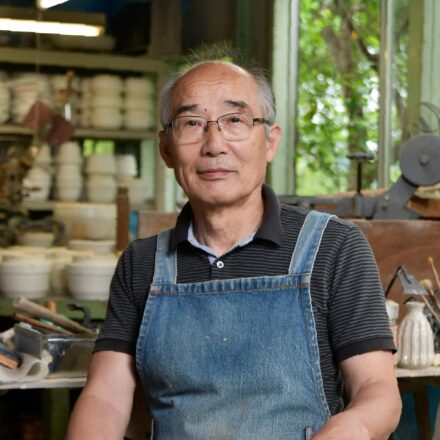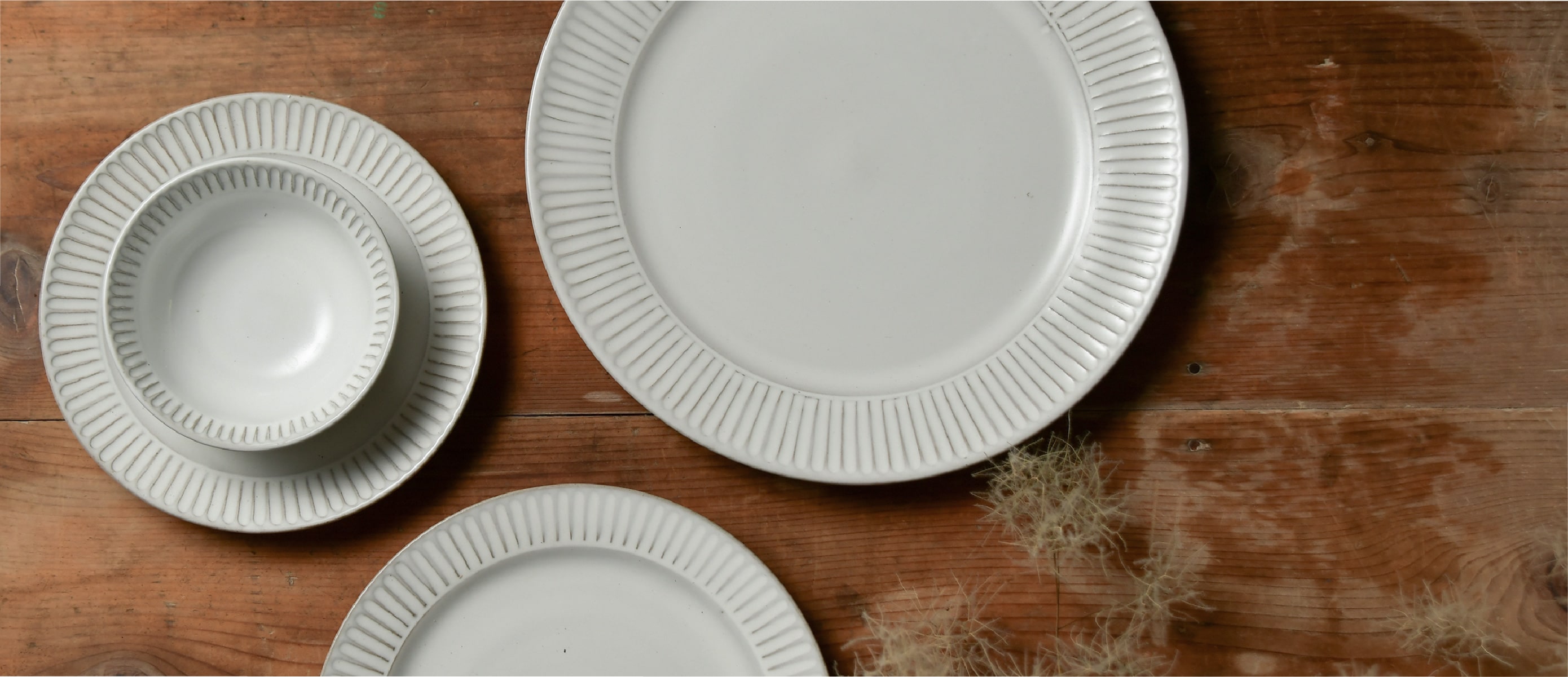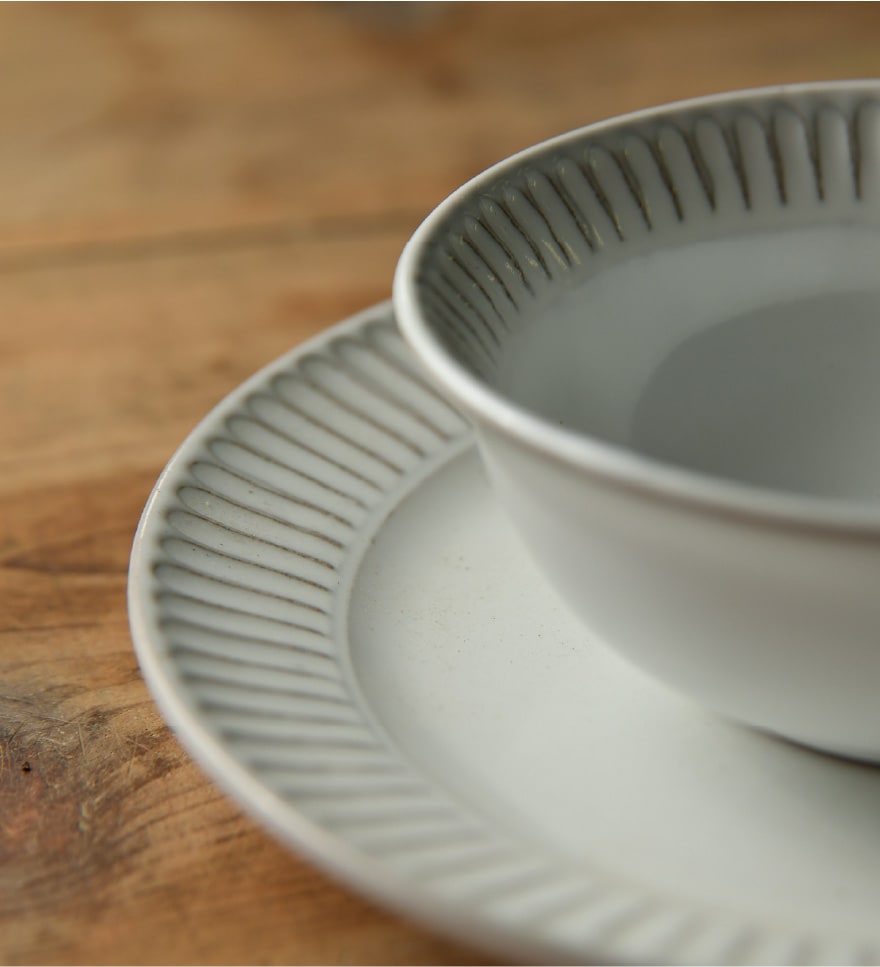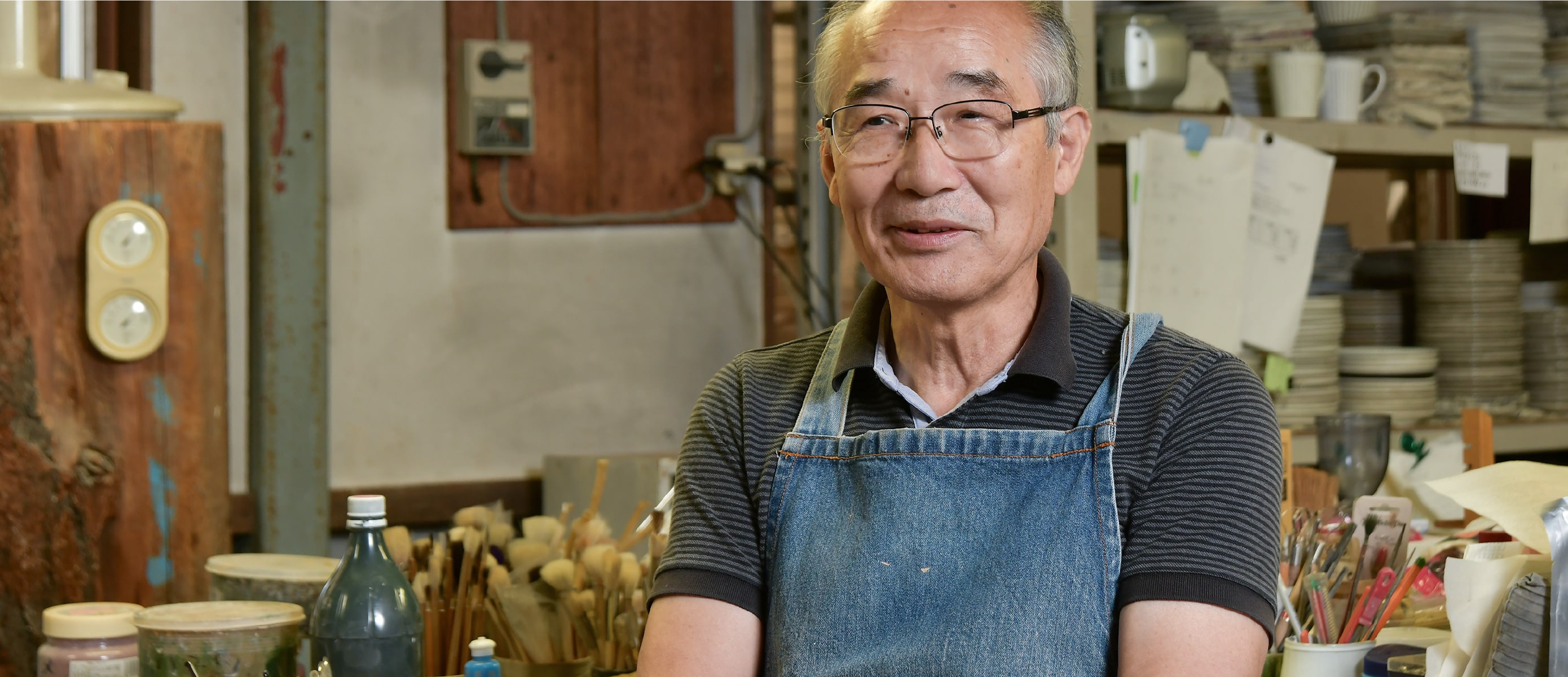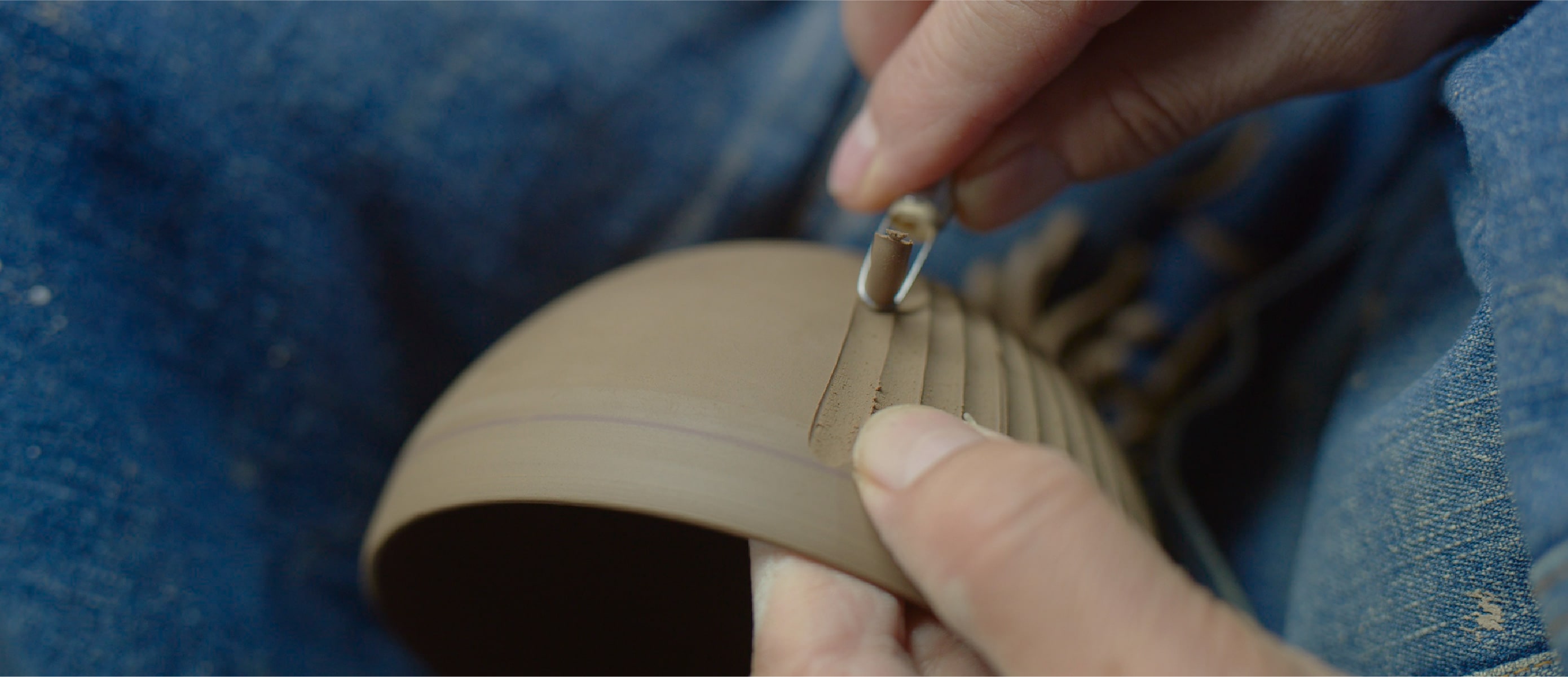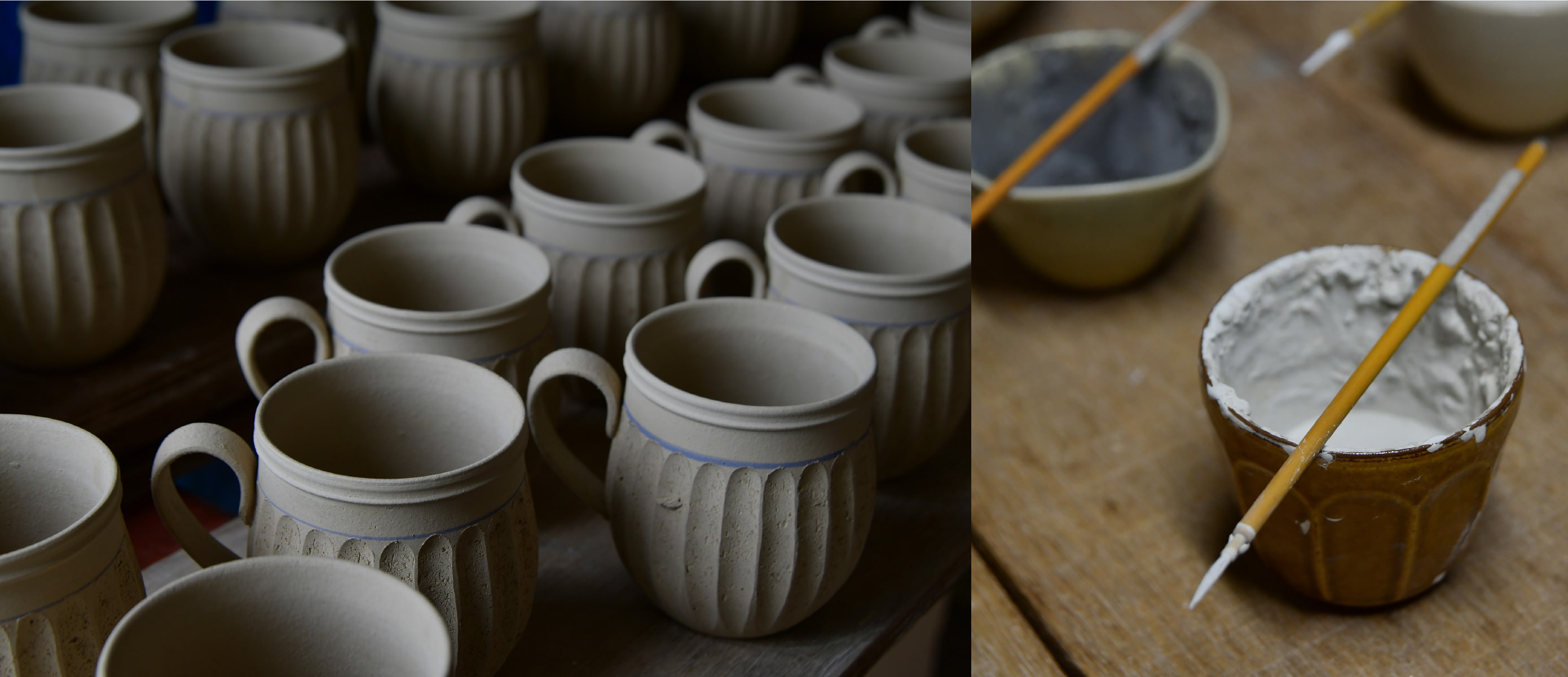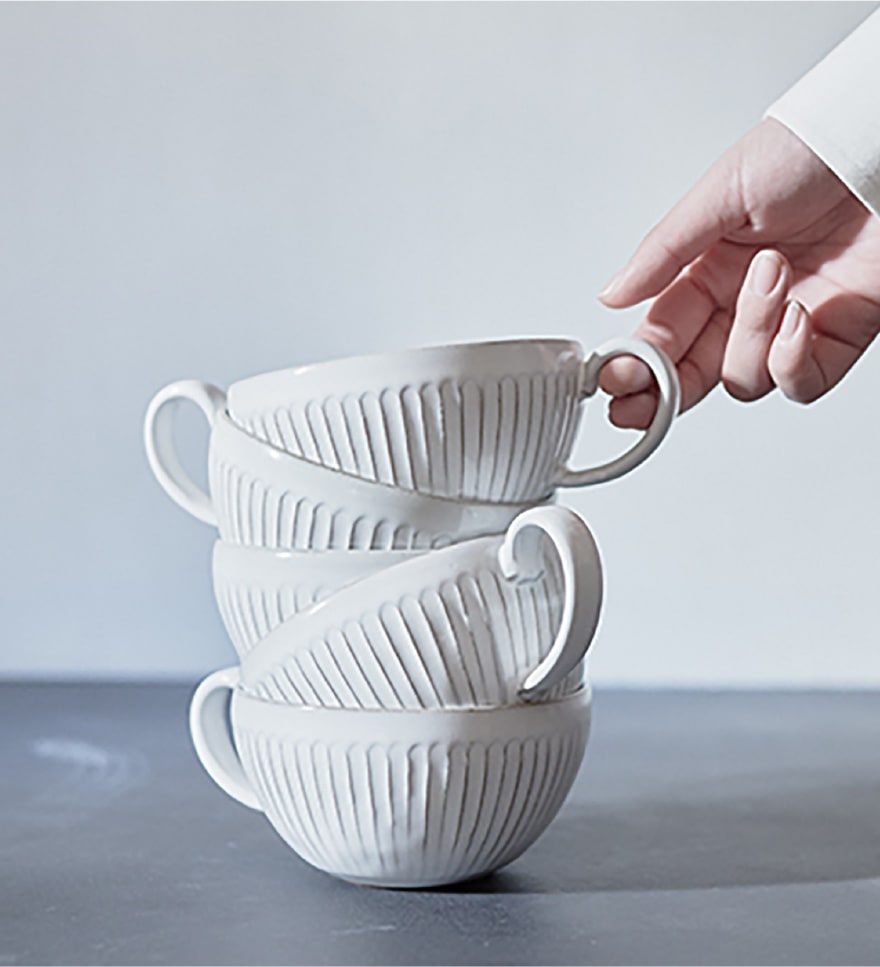Transition from Traditional Oribe to Kohiki Pottery
Tohzan gama is located in Dachi-cho, Toki City. Mr. Kenji Kato opened the pottery in 1973 after quitting the family business of ceramics painting to start pottery making from scratch. Since that time, Mr. Kato’s motto has been to make potteries that fit current trends and are close to people’s daily lives.
In the early days of his business, he mainly made Oribe ware, which is representative of Minoyaki. He came up with the idea of bringing to ordinary households the prestigious Oribe, which was mainly used for tea ceremony utensils and “Kaiseki” cuisine a traditional Japanese cuisine. Mr. Kato studied on his own, reading documents from the Muromachi period (1336-1573) and looking at kilns and items used during the Golden age of pottery. He mixed the Oribe glaze himself, focusing on the vivid green color, and completed the ideal Oribe ware. The beauty of Oribe ware won people’s hearts, but soon many kilns began to make Oribe ware, and he realized that it was gradually becoming difficult to differentiate himself from others. In addition, he felt threatened by the fact that the era of mass production, where “if you make it, it will sell,” was over and original products were in demand. He felt that he had to create something new. That’s when he focused on the combination of “Kohiki,” with its soft white color, and “Shinogi” a decorative technique.

